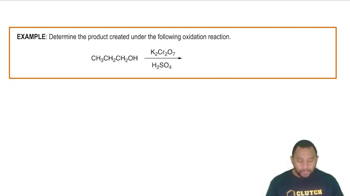Here are the essential concepts you must grasp in order to answer the question correctly.
Epinephrine Structure and Function
Epinephrine, also known as adrenaline, is a hormone and neurotransmitter that plays a critical role in the body's fight-or-flight response. It is composed of a catecholamine structure, which includes a benzene ring with two hydroxyl groups and an amine side chain. Understanding its chemical structure is essential for identifying how it interacts with receptors and how it can be affected by oxidation.
Recommended video:
Oxidation Reactions
Oxidation is a chemical reaction that involves the loss of electrons or an increase in oxidation state by a molecule. In the context of epinephrine, oxidation can lead to the degradation of the molecule, affecting its efficacy. Recognizing the specific functional groups that undergo oxidation is crucial for understanding the stability and shelf life of epinephrine in EpiPens.
Recommended video:
Alcohol Reactions Oxidation Reactions Example 1
Chemical Stability and Expiration
Chemical stability refers to the ability of a substance to maintain its chemical integrity over time. In pharmaceuticals like EpiPens, factors such as light, temperature, and oxidation can lead to degradation, resulting in expiration. Understanding the conditions that affect the stability of epinephrine helps in recognizing the importance of checking expiration dates and proper storage to ensure effectiveness during allergic reactions.
Recommended video:
Chemical Reaction: Chemical Change Concept 1
 Verified step by step guidance
Verified step by step guidance Verified Solution
Verified Solution



 3:12m
3:12m